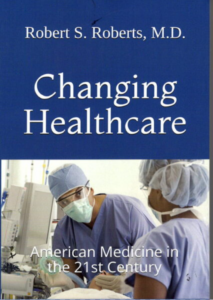Bad public health decisions are rampant in this country right now. With the wide variance in how state governors are reacting to the Covid pandemic, you don’t have to be a rocket scientist to realize some of them are making bad decisions.
Many states passed new laws to legalize recreational marijuana recently, including Arizona, Montana, New Jersey and South Dakota. They join other states who earlier made the same decision including Colorado, California, Oregon, Washington, Minnesota, Massachusetts and Alaska. Many of those states are already having buyer’s remorse about their decision.
But the state of Oregon may have a lock on the worst new public health policy decision of all. I’m referring to their recent legalization of small amounts of harder drugs including cocaine, heroin and methamphetamines. None of these drugs have any therapeutic applications in these forms. There seems to be no end to the madness sweeping our country.
Naturally, the New York Times considered this good news. They write, “Drugs once thought to be the scourge of a healthy society, are getting public recognition as a part of American life.” Considering the source, this is hardly an endorsement by rational minds.
Naomi Schaefer Riley and John Walters, writing in The Wall Street Journal had more cogent and informed views. They write, “In reality, drugs are very much a scourge, particularly in the lives of young children. In 2019 parental substance abuse was listed as a cause for a child’s removal to foster care 38% of the time, a share that has risen steadily in the past decade. Experts suggest this is an underestimate and the real number may be up to 80%.”
They report that interviews with foster parents suggest that there are very few cases of children in the system that don’t involve substance abuse. Moreover, there are hundreds of thousands of children who are in the care of a single parent or other guardian because of a mother or father’s drug use. In a recent paper from the National Bureau of Economic Research, three professors from Notre Dame University estimates that “if drug abuse had remained at 1996 levels, 1.5 million fewer children aged 0-16 would have lived away from a parent in 2015.” In other words, this is a problem getting worse, not better. There is little doubt that legalizing these drugs will lead to even greater abuse of children.
If you’re a drug dealer, right now you’re celebrating. Your previously illegal business has just come out of the closet. You can stop worrying about law enforcement. The price of your drugs may go down as supply increases, but the number of customers is sure to rise and the costs of doing business just got cheaper. Adults may consider this progress but the children will surely suffer.
Riley and Walters go on: “More dug availability means more drug use, which increases interpersonal violence, including abuse and neglect of children. Babies exposed to drugs in utero can experience severe withdrawal in the near term and developmental delays in the long term. Children going through withdrawal are extraordinarily difficult to care for, and already overwhelmed parents may respond violently.”
But the greatest problem is that drug abuse leads to maltreatment of children. The Children’s Bureau of the Department of Health and Human Services reported in 2018, “Nationally, more than one quarter (28.7%) of victims are younger than 3 years old. Victims younger than 1 year are 15.3% of all victims.” Children under 3 made up more than three-quarters of child-maltreatment fatalities in fiscal 2018.
The breakdown of the family has been identified as the largest influence on rising crime rates in poor communities and this change in drug policy is sure to make the situation worse. It’s a bad time to be a child in America, especially in the State of Oregon.


